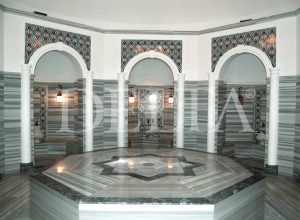What is marble?
Marble is a metamorphic rock formed by the metamorphism of limestone or dolomite under high temperature and pressure. Marble, which is generally crystalline, is found in nature in a wide variety of colours and patterns and is widely used due to its aesthetic appearance.

What is marble?
We can define marble as follows.
Marble is a metamorphic rock consisting mainly of the minerals calcite (calcium carbonate, CaCO₃) or dolomite (calcium magnesium carbonate, CaMg(CO₃)₂). Under high temperature and pressure, the original limestone or dolomite rocks recrystallise and become a denser and harder rock called marble.
Formation Process of Marble:
The formation of marble goes through the following processes:
Starting Rock: Limestone or dolomite rocks are the raw material of marble.
Metamorphism: When these rocks are exposed to high temperature and pressure as a result of tectonic movements in the earth’s crust, their mineral structure changes. Calcite and dolomite minerals recrystallise and form larger crystals.
Recrystallisation: In this process, fossils, gaps and layers in the original rock structure disappear and gain a more homogeneous structure.
Chemical Structure of Marble:
The chemical composition of marble is largely calcium carbonate (CaCO₃), but some types of marble may contain magnesium carbonate (MgCO₃). This composition can also be enriched with various impurities that affect the colour and pattern of the marble. For example, iron oxides can cause red and pink tones in marble, while clay minerals can create grey and green tones.
The crystalline structure of marble gives it a shiny and smooth surface, which makes it particularly suitable for decorative purposes. Due to its durability and aesthetic appearance, marble is used in many areas such as construction, art and decoration.

Please check our marble products. > Marble



